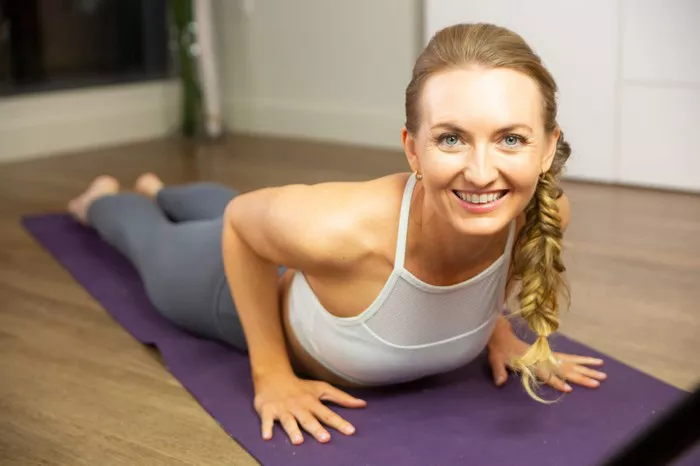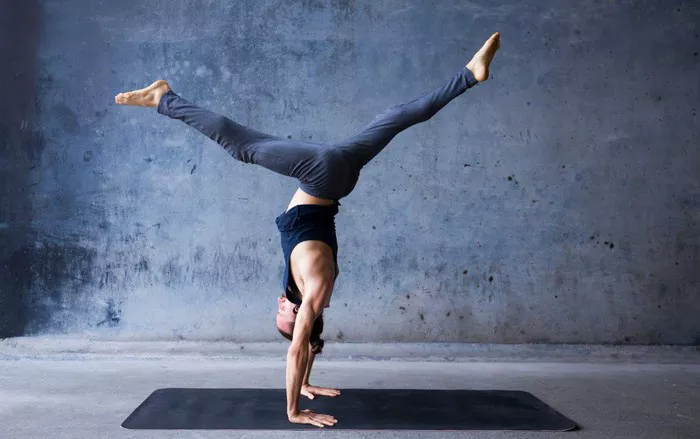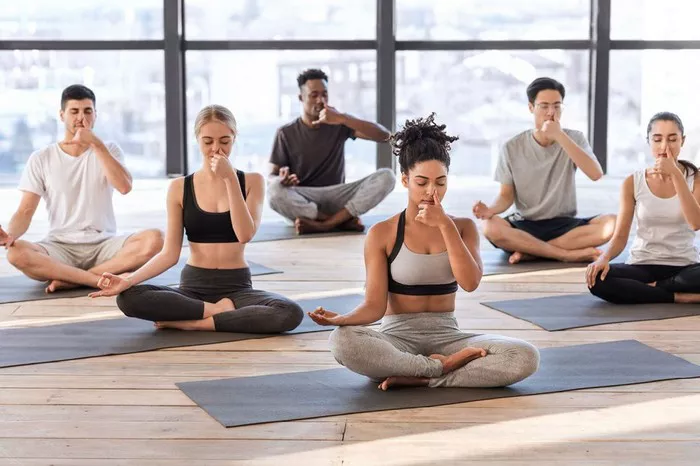Yoga is celebrated worldwide for its profound benefits on both the mind and body. Its holistic approach enhances flexibility, strength, mental clarity, and overall well-being. However, one area that often goes unnoticed in the discussion of yoga’s benefits is hair health. Many yoga practitioners experience changes in their hair’s texture, volume, and scalp condition. This happens due to various factors linked to yoga practice, such as sweat, hair positioning, and even the oils used for scalp massage.
This guide aims to shed light on how to protect your hair while practicing yoga, ensuring that the journey toward inner peace does not compromise the vitality of your hair. Drawing on years of teaching experience and an understanding of the subtle interplay between body care and hair care, this article provides practical, easy-to-follow advice tailored to yoga enthusiasts.
The Impact of Yoga on Hair: Why Protection Matters
Yoga involves dynamic movements, postures, and sometimes inverted poses that can influence your scalp and hair. Here are a few reasons why hair care during yoga is essential:
- Sweat and Scalp Hygiene: During an intense yoga session, sweat production increases significantly. Sweat, combined with the natural oils of the scalp, can create an environment conducive to fungal or bacterial growth, leading to scalp irritation or dandruff.
- Hair Breakage from Tying Methods: Many yoga poses require hair to be tied back for comfort and safety. Incorrect tying or tight hairstyles can cause stress on the hair shaft, resulting in breakage and hair loss.
- Friction and Damage: Movement and contact with yoga mats can create friction, especially for those with long or fragile hair, potentially leading to split ends or tangling.
- Posture Influence on Scalp Circulation: Certain yoga poses, especially inversions like headstands and shoulder stands, can impact blood flow to the scalp, which may have both beneficial and adverse effects depending on hair condition.
Understanding these factors helps practitioners take proactive steps to protect their hair health while continuing to reap yoga’s many benefits.
Preparing Your Hair Before Yoga Practice
Pre-session hair care is fundamental in safeguarding hair integrity during yoga.
Choose the Right Hairstyle
For yoga sessions, it is vital to select hairstyles that secure the hair without causing tension:
- Loose Buns or Braids: Braids, especially loose ones, minimize tangling and friction. A bun placed moderately high on the head can keep hair away from the face without being too tight.
- Avoid Tight Ponytails: Tight ponytails can pull on the hair roots, increasing the risk of traction alopecia.
- Use Soft Hair Accessories: Opt for hair ties made from silk or satin rather than rubber bands or elastic bands that can cause breakage.
Wash Hair Appropriately
- If you tend to sweat heavily, washing hair before yoga can help reduce sweat accumulation and scalp buildup during the session.
- Avoid heavy conditioners or oily treatments before practice, as these can make hair greasy and attract dirt from yoga mats.
- For dry scalp types, a light pre-session scalp massage with natural oils like coconut or jojoba, applied sparingly, can help maintain scalp moisture.
Protect Hair from Sweat
- Use a clean, breathable headband made of moisture-wicking material to absorb sweat and prevent it from running down the scalp.
- A cotton or bamboo yoga cap can also be an excellent option for keeping hair in place while managing sweat.
Hair Care During Yoga: Practical Tips for Every Pose
Yoga’s variety of postures demands adaptable hair care strategies.
Handling Inverted Poses
Inversions like headstands (Sirsasana) or shoulder stands (Sarvangasana) increase blood flow to the scalp, which can promote hair growth if done correctly. However, the pressure exerted on the head can also cause hair breakage if hair is not protected properly.
- Before attempting inversions, ensure hair is secured in a way that distributes tension evenly, such as braids wrapped into a bun.
- Use a clean, soft towel or yoga mat with extra padding under the head to reduce friction.
- Avoid dry hair inversions, as brittle hair is more prone to breakage.
Managing Sweat and Moisture
- Periodically wiping the forehead and hairline during practice can prevent sweat from saturating the scalp and hair.
- Stay hydrated to maintain overall hair health and skin moisture.
Avoiding Excessive Hair Manipulation
- Minimize touching or adjusting hair mid-practice, which can lead to tangling.
- Keep hair out of the way of hands and the mat to prevent unnecessary friction.
Post-Yoga Hair Care: Maintaining Hair Health After Practice
How you care for your hair after yoga is just as important as preparation.
Immediate Hair Hygiene
- Wash your hair promptly if you have sweated significantly to remove salt, dirt, and bacteria from the scalp.
- Use mild, sulfate-free shampoos to prevent stripping natural oils.
- Incorporate a gentle scalp massage during washing to stimulate blood flow and relax muscles.
Conditioning and Nourishing
- Apply a light conditioner focusing on the mid-lengths and ends to avoid weighing down the scalp.
- For dry or damaged hair, use deep conditioning treatments or hair masks 1-2 times per week.
Drying Techniques
- Avoid vigorous towel drying, which can cause hair cuticle damage.
- Pat hair dry gently and allow it to air dry if possible.
- If using a hairdryer, choose a low heat setting to minimize heat damage.
Detangling with Care
- Use a wide-tooth comb or fingers to detangle hair starting from the tips and moving upwards.
- Avoid brushing hair when wet, as it is more prone to breakage.
Nutrition and Lifestyle Tips to Support Hair Health for Yoga Practitioners
Healthy hair starts from within. Complement your yoga practice with habits that nourish your hair naturally:
- Balanced Diet: Ensure adequate intake of proteins, omega-3 fatty acids, vitamins (especially B-complex, A, C, and E), and minerals like zinc and iron.
- Hydration: Drink plenty of water throughout the day to maintain scalp and hair hydration.
- Stress Management: Yoga helps reduce stress, which is a significant factor in hair loss. Incorporate mindfulness and breathing techniques to manage stress effectively.
- Adequate Sleep: Quality sleep supports cell regeneration, including hair follicle health.
Choosing the Right Yoga Mat and Environment for Hair Care
The environment where you practice yoga can influence your hair condition.
- Clean Yoga Mats: Use a clean, personal yoga mat and wash it regularly to reduce exposure to dirt and bacteria that can affect the scalp.
- Ventilation: Practice in a well-ventilated space to reduce excessive sweating.
- Avoid Outdoor Pollutants: If practicing outdoors, protect hair from dust and pollutants by using scarves or caps.
Common Mistakes to Avoid When Caring for Hair During Yoga
- Ignoring Sweat: Leaving sweat on the scalp for long hours can lead to fungal infections or irritation.
- Tying Hair Too Tight: Excessive tension can cause hair follicle damage.
- Skipping Hair Washing: Not cleansing hair after sweaty sessions allows buildup, damaging hair and scalp.
- Using Harsh Chemicals: Avoid styling products with harsh chemicals before yoga practice.
- Neglecting Scalp Care: Scalp health is crucial for hair growth; ignoring it can result in weakened hair roots.
Special Considerations for Different Hair Types
For Oily Hair
- Wash hair before yoga to avoid excess oil buildup.
- Use lightweight, non-comedogenic scalp products.
- Avoid heavy oils that may exacerbate oiliness.
For Dry or Curly Hair
- Protect hair with moisturizing leave-in conditioners.
- Use satin or silk scrunchies to reduce friction.
- Avoid over-washing, which can strip natural oils.
For Fine or Fragile Hair
- Choose loose hairstyles to reduce stress on hair strands.
- Avoid heat styling on practice days.
- Incorporate protein treatments to strengthen hair.
Conclusion
Yoga is a journey that nurtures your mind, body, and spirit. Protecting your hair during this journey ensures that you maintain a balanced and healthy appearance, reinforcing your confidence and well-being. By adopting mindful hair care practices before, during, and after yoga, you can prevent damage, support scalp health, and enjoy the holistic benefits of yoga fully.
Remember, the key to successful hair protection lies in gentle handling, proper hygiene, and nurturing your hair from the inside out. Let your yoga practice be a source of beauty, strength, and vitality—not only for your body and mind but for your hair as well.
Related Topics:

















